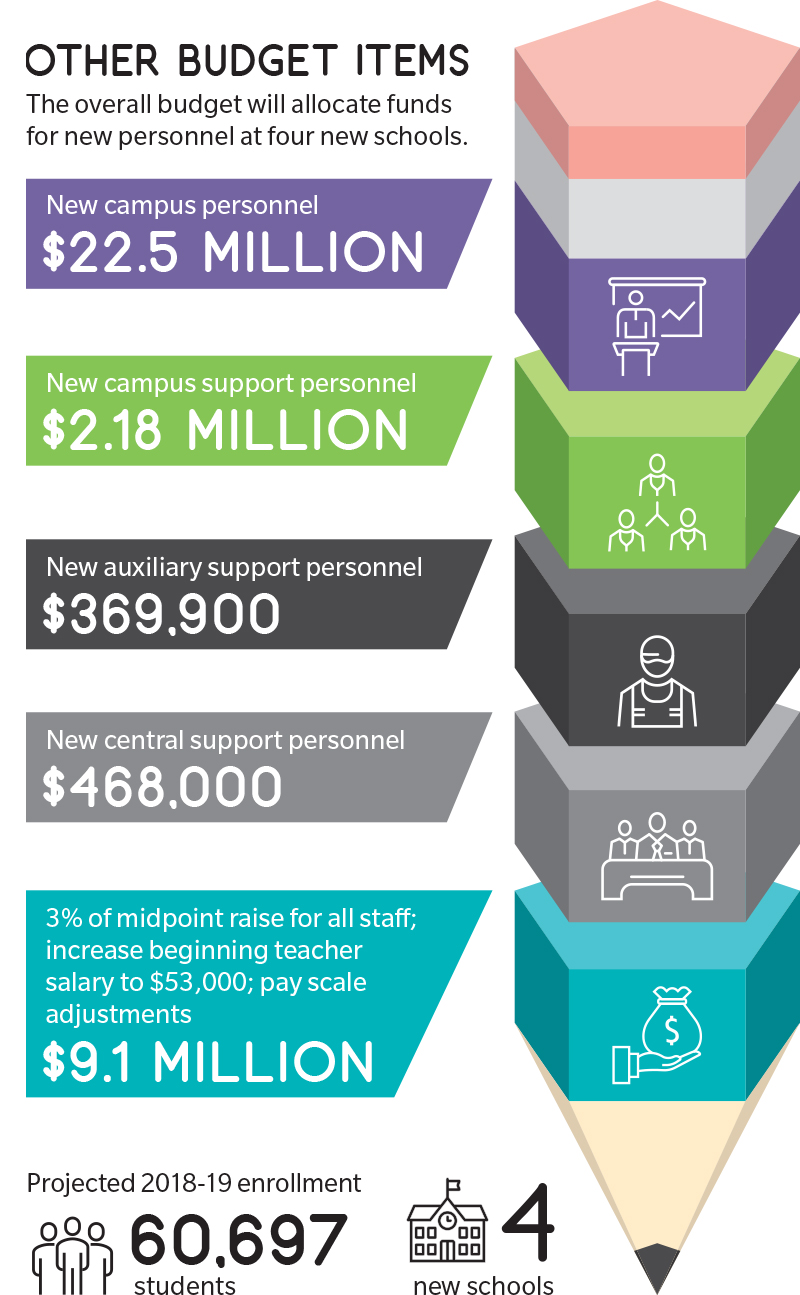At the start of the 2018-19 school year, Frisco ISD will open four new schools, add new staff and increase teacher salaries.
The FISD board of trustees adopted a $676.6 million budget at its June 11 meeting that will allocate funds for new campus personnel for the four new schools opening in August: Talley Elementary School, Liscano Elementary School, Lawler Middle School and Memorial High School.
The budget also includes a $41 million surplus in its maintenance and operations budget. The surplus is larger than the $3.6 million surplus that was projected last year.
FISD Chief Financial Officer Kimberly Smith said a portion of the surplus is spendable, while a large portion of the budget is not.
Smith said a portion of the surplus will be used to implement a 3 percent raise to all employees based upon the midpoint pay range for their position. Beginning teachers’ annual salaries will also increase to $53,000, and the district will adjust the pay scale for existing teachers. The district will also increase the pay rate for substitute teachers.
Nearly half of the surplus is not spendable and will be placed in reserves in preparation for reduced state funding the next year, Smith said. According to the school funding formula, as tax values increase and a school district collects more revenue, the state’s share of funding to the district will drop by about the same amount the next school year.
Contributing factors
Smith said there are several factors that contributed to the larger surplus.
Assessed property values have increased and provided the district with nearly $20 million in additional revenue. The district also received $1.6 million in state aid because of enrollment growth and about $100,000 more in federal revenue because of an increase in Medicaid reimbursements for student health services provided by the district. The state and federal revenue could have a slight increase as the district closes its books on the 2017-18 school year, Smith said. The district’s fiscal year runs July 1 through June 30.
Smith also said the district spent $15 million less than what was expected at the start of last year.
“For the past couple of years, we’ve been hiring less experienced staff as more experienced staff leaves,” Smith said. “About 60 percent of our newly hired teachers have zero to two years’ experience ... and that turnover results in savings on those salaries.”
Smith said the estimated amount in savings as a result in turnover in the last year is about $3.5 million.
Other savings were made through efficiencies through increased class sizes and general savings in departmental budgets.
Priorities-based budgeting
In August 2016, voters turned down a tax ratification election that would have increased the district’s property tax rate by 13 cents for maintenance and operations. Afterward the district incorporated priorities-based budgeting, which forced the district-wide
spending cuts.
“The [priorities-based budgeting] has shifted the mentality of our district to spending money efficiently and saving where we can, and I think that saving mentality has become the new norm,” Smith said.
The 2018-19 budget is based on a total tax rate of $1.448 per $100 of property valuation, or $0.012 less than the current tax rate of $1.46, Smith said.
The tax rate was determined on preliminary estimates of certified taxable values and is only for budget-planning purposes, Smith said. The district is not locked into that rate.
Actual 2018-19 tax rates will be adopted by the board of trustees in August after receiving certified property values.
Smith said the board of trustees has a couple of months to decide whether the tax rate should remain the same or if it needs to be changed.





